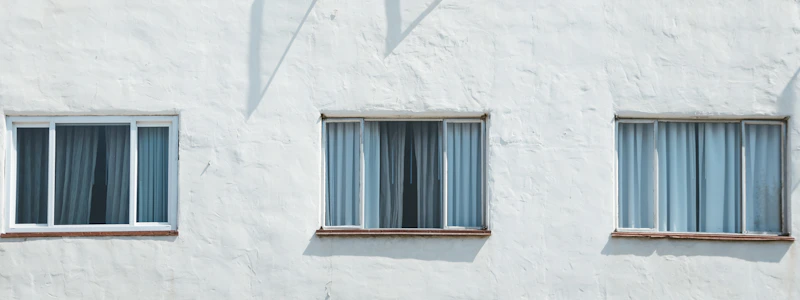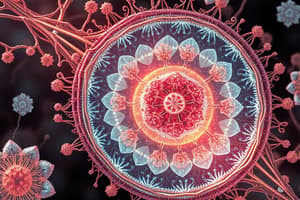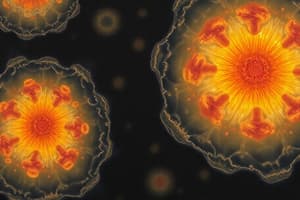Podcast
Questions and Answers
What was the initial observation made by Robert Hooke regarding cork?
What was the initial observation made by Robert Hooke regarding cork?
- Cork contains only one type of cell.
- Cork has a honey-comb like structure. (correct)
- Cork cells were large and visible to the naked eye.
- Cork is made up of living cells.
How do unicellular and multicellular organisms differ?
How do unicellular and multicellular organisms differ?
- Multicellular organisms are always larger than unicellular organisms.
- Multicellular organisms consist of only one cell.
- Unicellular organisms consist of a single cell. (correct)
- Unicellular organisms have more than one type of cell.
What primarily contributed to the discovery of cells in the seventeenth century?
What primarily contributed to the discovery of cells in the seventeenth century?
- Expedition by scientists to study human anatomy.
- Introduction of electron microscopy.
- Improvement in genetic engineering techniques.
- Development of advanced optical instruments. (correct)
What composition is found in the outermost layer of human skin?
What composition is found in the outermost layer of human skin?
Which statement accurately describes the significance of Robert Hooke's work?
Which statement accurately describes the significance of Robert Hooke's work?
Flashcards
Cell
Cell
The basic unit of life, too small to be seen with the naked eye.
Robert Hooke
Robert Hooke
The first scientist to observe cells, he looked at cork under a microscope in 1665.
Unicellular organism
Unicellular organism
Living things that are made up of a single cell.
Multicellular organism
Multicellular organism
Signup and view all the flashcards
Variation in cell number
Variation in cell number
Signup and view all the flashcards
Study Notes
Discovery of the Cell
- Cells are the basic structural units of all living things
- Cells were too small to be seen with the naked eye for a long time
- Optical instruments allowed for the discovery of cells in the 17th century
- Robert Hooke, in 1665, observed cork cells using a microscope
- Hooke observed a honey-comb like structure in cork, consisting of smaller compartments
- These compartments were later called "cells" (Latin for "a little room")
The Cell
- Living organisms are composed of cells
- Cells have similar basic structures but differ in number, shape, and size
- Skin cells are constantly being replaced, with roughly four kilograms of skin cells lost per year
Variation in Cell Number, Shape, and Size
- Organisms vary significantly in size due to the number of cells
- Amoeba is a single-celled organism
- Earthworms have millions of cells
- Organisms are categorized as unicellular (single cell) or multicellular (many cells) based on cell number
Studying That Suits You
Use AI to generate personalized quizzes and flashcards to suit your learning preferences.




